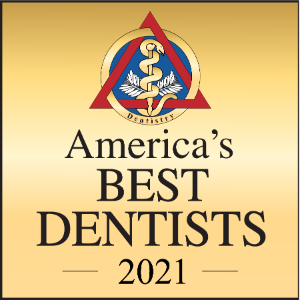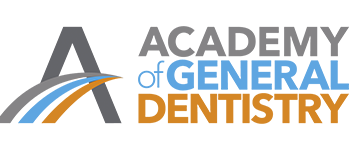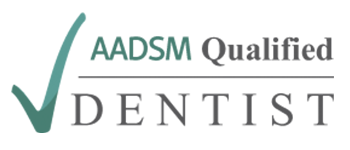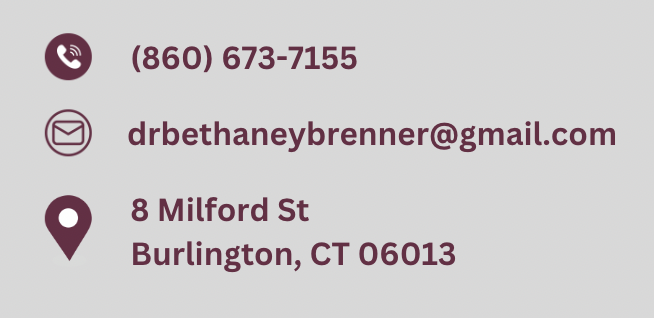When your child has sleep apnea, finding the right treatment can feel overwhelming, but the good news is that most kids respond really well to treatment once you find what works for them. Treatment options range from simple lifestyle changes and special breathing devices to surgical procedures that remove enlarged tonsils and adenoids.
Working with experienced professionals like Dr. Bethaney Brenner in Burlington, Connecticut, helps ensure your child gets the most effective treatment plan tailored to their specific needs and age.
Understanding Why Kids Get Sleep Apnea
Sleep apnea in children is quite different from the adult version, and understanding these differences helps explain why treatment approaches are also different. Kids usually develop sleep apnea because of physical blockages in their airways, not because of lifestyle factors.
Dr. Bethaney Brenner’s four decades of experience treating Burlington families has shown her that the most common cause in children is enlarged tonsils and adenoids. These tissues are part of your child’s immune system, but sometimes they grow too big and block the airway during sleep.
Unlike adults who might develop sleep apnea due to weight gain or other health issues, children’s sleep apnea is usually related to their physical development. Their airways are naturally smaller, and when tissues like tonsils and adenoids get enlarged, it’s much easier for breathing to become blocked.
Some children also have structural differences in their face or jaw that make breathing more difficult. These might include a small jaw, large tongue, or other features that affect how air flows through their airways during sleep.
Starting with the Gentlest Treatments First
Most doctors prefer to start with the least invasive treatments and work their way up to more intensive options if needed. This approach is especially important for children because their bodies are still growing and changing.
Simple lifestyle changes can sometimes make a big difference. Helping your child maintain a healthy weight reduces pressure on their airways. Making sure they sleep on their side instead of their back can also help keep airways open during sleep.
Creating the perfect sleep environment is another gentle first step. This means keeping your child’s bedroom cool, dark, and quiet. Using air purifiers to reduce allergens can help if your child has allergies that cause nasal congestion.
Establishing a consistent bedtime routine helps your child’s body prepare for sleep. This might include a warm bath, reading together, or other calming activities that signal it’s time to wind down. Regular sleep and wake times help regulate your child’s natural sleep patterns.
When Breathing Devices Become Necessary
If lifestyle changes aren’t enough, your doctor might recommend special devices that help keep your child’s airways open during sleep. The most common of these is called a CPAP machine, which stands for Continuous Positive Airway Pressure.
A CPAP machine works by gently blowing air through a mask that your child wears while sleeping. This steady stream of air keeps the airways from collapsing, which prevents the breathing interruptions that cause sleep apnea.
Modern CPAP machines designed for children are much more comfortable and user-friendly than older versions. They’re quieter, smaller, and come with colorful masks and tubing that make them less intimidating for kids. Some even have fun designs or characters that children enjoy.
The key to success with CPAP therapy is helping your child get used to wearing the mask. Start by having them wear it for short periods while awake, maybe while watching TV or reading. Gradually increase the time until they’re comfortable wearing it all night.
Dental Treatments That Open Airways
Dental professionals like Dr. Brenner often play a crucial role in treating pediatric sleep apnea through specialized orthodontic devices. Her advanced training in orthodontics and her certification in treating facial pain and jaw disorders make her uniquely qualified to help children with sleep-breathing issues.
Palatal expanders are one of the most effective dental treatments for sleep apnea in children. These devices gradually widen the upper jaw over several months, creating more space in the mouth and making it easier to breathe during sleep.
The expansion process is very gradual and typically doesn’t cause significant discomfort. Children usually adjust well to these devices, and the results can be dramatic. Many kids see improvements in their breathing within just a few weeks of starting treatment.
Mandibular advancement devices work differently by gently moving the lower jaw forward. This repositioning helps keep the tongue and soft tissues from blocking the airway during sleep. These devices are particularly helpful for children with certain jaw relationships that contribute to their sleep apnea.
Dr. Brenner’s involvement with prestigious organizations like the Connecticut State Dental Association ensures she stays current with the latest advances in dental sleep medicine. Her recognition as America’s Best Dentist reflects her commitment to providing the most effective treatments available.
When Surgery Becomes the Best Option
Sometimes surgical intervention is the most effective way to treat pediatric sleep apnea, especially when enlarged tonsils and adenoids are the main problem. The most common surgery is called adenotonsillectomy, which removes these tissues.
This surgery has been performed safely on children for many decades and has very high success rates for treating sleep apnea. Most children see immediate improvements in their breathing after recovery, and many parents report dramatic changes in their child’s energy levels and behavior.
The procedure itself is relatively quick, usually taking less than an hour. Children typically go home the same day or after one night in the hospital. Recovery usually takes about a week, during which your child will need to stick to soft foods and get plenty of rest.
Here’s what to expect with adenotonsillectomy surgery:
- Pre-surgery evaluation to ensure your child is healthy enough for the procedure
- General anesthesia administered by experienced pediatric anesthesiologists
- Removal of enlarged tonsils and adenoids through the mouth
- Recovery period with pain management and dietary modifications
- Follow-up appointments to monitor healing and breathing improvement
The decision to proceed with surgery is never taken lightly. Doctors consider factors like the severity of your child’s sleep apnea, their age, overall health, and how well other treatments have worked. Surgery is typically recommended when conservative treatments haven’t been effective and the child’s sleep apnea is significantly affecting their health or development.
Creating a Treatment Plan That Grows with Your Child
One of the most important aspects of treating pediatric sleep apnea is recognizing that children are constantly growing and changing. What works perfectly for a 5-year-old might need adjustment by the time they’re 8 or 10.
Regular follow-up appointments are crucial for monitoring your child’s progress and making necessary adjustments to their treatment plan. Dr. Brenner’s comprehensive approach includes ongoing evaluation to ensure treatments remain effective as children grow.
Physical growth can actually improve sleep apnea in some children. As their airways naturally get larger and their facial structure develops, breathing during sleep often becomes easier. However, this process can take years, so active treatment is usually necessary in the meantime.
Treatment plans might combine multiple approaches for the best results. For example, a child might use a CPAP machine while also working with an orthodontist to expand their palate. This multi-modal approach often provides better outcomes than relying on a single treatment method.
Supporting Your Child Through Treatment
Helping your child succeed with sleep apnea treatment requires patience, consistency, and lots of positive encouragement. Remember that most treatments take time to show their full benefits, and your child will need your support throughout the process.
Make treatment feel normal and routine rather than scary or medical. If your child uses a CPAP machine, let them help decorate it with stickers or choose fun colors for the tubing. Turn putting on the mask into part of the bedtime routine, just like brushing teeth.
Celebrate small victories along the way. Notice when your child seems more rested, has more energy, or shows improvements in behavior or school performance. These positive changes can motivate both you and your child to stick with treatment even when it feels challenging.
Connect with other families going through similar experiences. Many Connecticut hospitals and sleep centers offer support groups for families dealing with pediatric sleep apnea. Sharing experiences and tips with other parents can be incredibly helpful and reassuring.
Working with Your Healthcare Team in Connecticut
Building strong relationships with your child’s healthcare providers is essential for successful treatment of sleep apnea. In Burlington and throughout Connecticut, families have access to excellent specialists who work together to provide comprehensive care.
Your team might include your child’s pediatrician, a sleep specialist, an ENT (ear, nose, and throat) doctor, and dental professionals like Dr. Brenner. Each brings unique expertise to help address different aspects of your child’s condition.
Communication between team members is crucial for coordinated care. Make sure all of your child’s providers know about treatments being provided by others. This prevents conflicts between treatments and ensures everyone is working toward the same goals.
Keep detailed records of your child’s symptoms, treatments, and progress. This information helps providers make informed decisions about adjusting treatment plans and provides valuable insights into what’s working well for your child.
The Long-Term Benefits of Successful Treatment
When pediatric sleep apnea is effectively treated, the benefits extend far beyond just better sleep. Children often experience improvements in multiple areas of their health and development.
Academic performance frequently improves once children start getting quality sleep. Better concentration, improved memory, and increased energy levels help kids succeed in school. Teachers often notice positive changes in behavior and attention span.
Physical health benefits include better growth patterns, improved immune function, and reduced risk of cardiovascular problems later in life. Children with untreated sleep apnea often catch up on growth once their sleep improves.
Emotional and behavioral improvements are also common. Many parents report that their children become happier, less irritable, and more social once their sleep problems are resolved. Family life often improves dramatically when everyone in the household is getting better sleep.
Staying Proactive About Your Child’s Sleep Health
Even after successful treatment, it’s important to remain vigilant about your child’s sleep health. Children’s needs can change as they grow, and what worked perfectly at one age might need adjustment later.
Schedule regular check-ups with your child’s healthcare providers to monitor their progress and catch any changes early. Dr. Brenner’s decades of experience serving Burlington families demonstrates the value of long-term relationships with healthcare providers who understand your child’s health history.
Continue practicing good sleep hygiene even after treatment resolves the sleep apnea. Healthy sleep habits benefit everyone and help prevent future sleep problems. This includes maintaining consistent bedtimes, creating a comfortable sleep environment, and avoiding screens before bedtime.
Stay educated about sleep health and be aware of any new symptoms that might develop. While pediatric sleep apnea often improves with growth and treatment, some children may need ongoing management or adjustments to their treatment plans as they mature.







